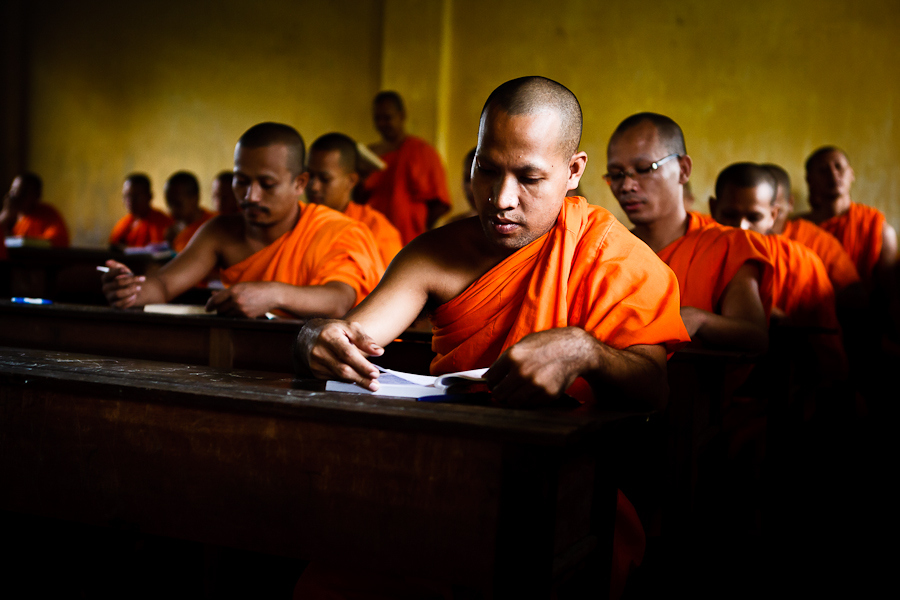Tra Vinh - Khmer temple
Tra Vinh is a particularly pretty tree-lined and non-touristic province capital situated on a small peninsula. The city is very welcoming with colonial facades and friendly people. The numerous Khmer temples in this region reflect the highest proportion of Khmer in the Mekong delta: about one third of the population is Khmer. There are 140 Khmer temples (40 Vietnamese temples, 5 Chinese temples, 14 churches and 7 mosques). One of the few Chinese communities in the Mekong delta is also found in Tra Vinh.
There is a market which is well worth seeing, as well as the Ong Bon Pagoda, which was dedicated to a Chinese general in 1556. There is also a Khmer sanctuary, the Ong Met Pagoda with a large seated Buddha.
Southwest of the town is the main attraction for tourists: the Ba Om lake and the Hang Pagoda. The rectangular lake is surrounded by tall trees and a spiritual place for Khmer. Close by is the beautiful and probably very old Ang Pagoda, which connects traditional Khmer architecture with colonial influences. Across the street you can find a museum which offers detailed insights into the Khmer culture. A little further away is the Hang Pagoda, another Khmer sanctuary, many storks are nesting in this area. Especially in the late afternoon when the storks return home in large numbers, this place is worth a visit.
About 40 miles south there is another stork Pagoda, the pagoda Nodol, with more birds.
Some of the many pagodas in Tra Vinh have schools where the language of the Khmer is taught. This is also the reason why many of the locals write and speak Khmer at least as good as Vietnamese.
Aged between 15 and 20, some young Khmer men take a break and live a few months or years as monks. They decide themselves on how long they are staying there.
About 5 km north of Tra Vinh you can find the Uncle Ho Temple which was built in 1971. This temple was dedicated to Ho Chi Minh and built when the war was still going.



































